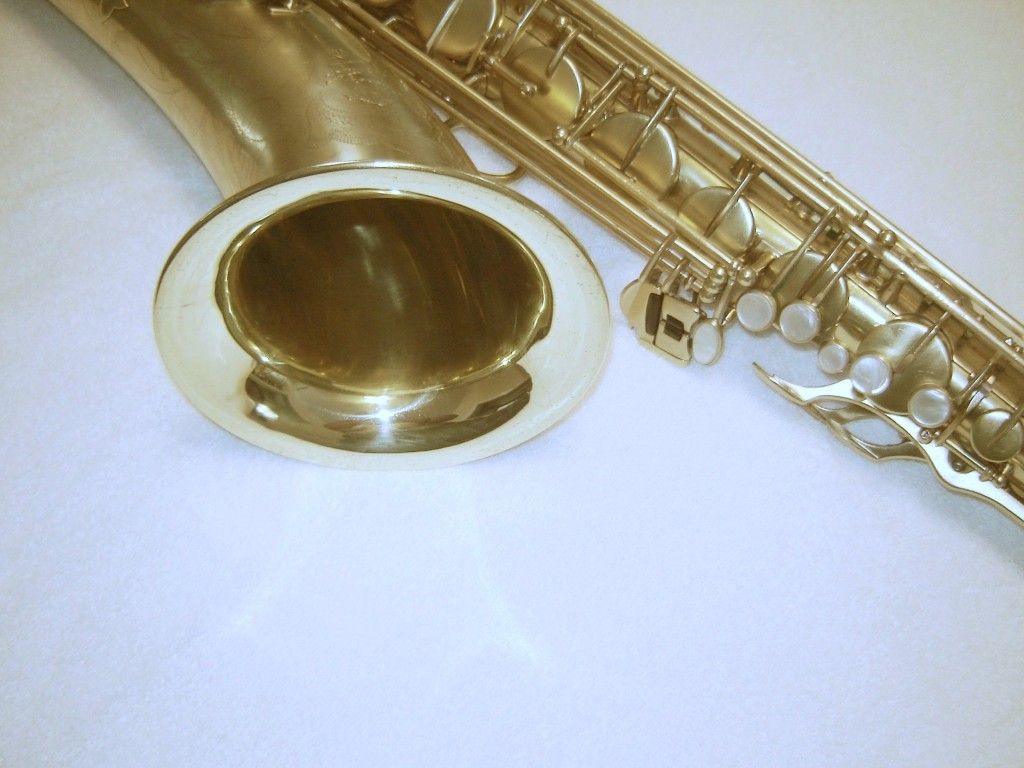There are actually two steps to restoring the finish on an older sax showing tarnish where large portions of the lacquer are gone. The first step is to remove all the remaining lacquer on the body and keys. This can be done chemically, or in the case of old nitrocellulose lacquers, by boiling the parts in water with a bit of baking soda added. It is not unusual to have to use some type of mild abrasive to get all of the old lacquer out of the "nooks and crannies" regardless of the method used.
At this point you have patches of shiny brass where the lacquer has just been removed, and areas where the brass has tarnished and corroded over time. To make the surface uniform once again, one can either polish the entire area back to a shine or apply what is known in the trade as a "scratch brush" finish. The "scratch brush" finish can be achieved by using a motor driven scratch wheel with soft brass wire bristles, by using steel wool, or by using a synthetic "steel wool" pad. It is true that all of the methods remove a miniscule amount of brass from the surface, including the polishing by hand or with a buffing wheel. If done carefully to avoid toneholes and posts, this process has no effect upon how an instrument plays in my judgement based upon my experience.
If the market values an ugly looking vintage Mark VI over one that has been carefully and beautifully restored, it is based upon myth and heresay in my opinion. If an owner does not plan to ever sell a vintage sax, then the resale value is secondary to the owner liking how it looks and plays. Below is a Mark VI Tenor I overhauled for a customer. Yes, I warned him that it may affect the resale value in the marketplace, and he assured me he wanted it overhauled with this unlacquered scratch finish.




